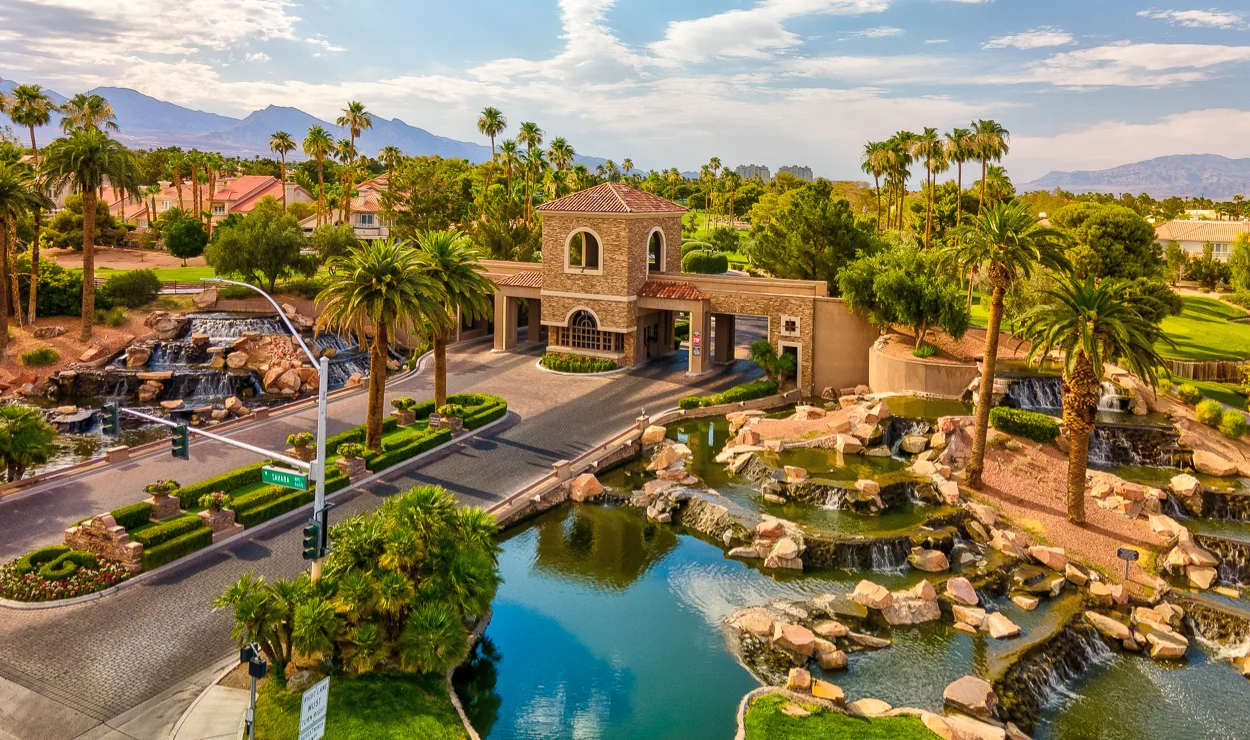Las Vegas is renowned for its vibrant energy and dynamic lifestyle, but its architectural landscape is equally captivating. The city boasts a rich tapestry of design styles, from the sleek lines of mid-century modern homes to the bold expressions of postmodernism. This blend of architectural innovation reflects the city’s evolution and its embrace of diverse cultural influences.
Mid-Century Modern Marvels
In the 1950s and 1960s, Las Vegas experienced a surge in mid-century modern architecture, characterized by clean lines, open floor plans, and seamless integration with nature. These homes often feature low-pitched gable roofs, expansive windows, and a harmonious blend of indoor and outdoor spaces. The use of natural materials like wood and stone further enhances their timeless appeal.
One of the most iconic mid-century modern neighborhoods in Las Vegas is Paradise Palms. Developed in the early 1960s, this community was the brainchild of developer Irwin Molasky and the architectural firm Palmer & Krisel. The neighborhood became a hotspot for celebrities and entertainers, with notable residents including Dean Martin and Debbie Reynolds. The homes in Paradise Palms are celebrated for their distinctive designs, featuring butterfly roofs, vibrant doors, and decorative breeze-block walls.
Another significant mid-century modern enclave is the Huntridge neighborhood. Established in the late 1940s and 1950s, Huntridge showcases homes with characteristic low-pitched roofs, large windows, and open interiors. The community has seen a resurgence in interest, with many properties being restored to their original glory, highlighting the enduring appeal of mid-century design.
Postmodern and Contemporary Expressions
As Las Vegas evolved, so did its architectural styles. The city embraced postmodernism, characterized by bold forms, eclectic designs, and a playful mix of historical references. A prime example is the Cleveland Clinic Lou Ruvo Center for Brain Health, designed by renowned architect Frank Gehry. Completed in 2010, the building features a striking deconstructivist design with a stainless steel façade that appears to be in motion, reflecting Gehry’s signature style.
Another notable example is the Neon Museum, which preserves and showcases iconic neon signs from the city’s past. The museum’s visitor center is housed in the restored lobby of the former La Concha Motel, a classic piece of mid-century modern architecture designed by Paul Revere Williams. This fusion of preservation and contemporary use highlights Las Vegas’s commitment to honoring its architectural heritage while embracing modernity.
Preservation and Revival
In recent years, there has been a growing movement to preserve Las Vegas’s unique architectural heritage. Neighborhoods like Paradise Palms have been recognized for their historical significance, and efforts are underway to maintain and restore these mid-century modern gems. Homeowners and preservationists are working together to ensure that the city’s architectural history is not only remembered but also celebrated.
Conclusion
Las Vegas’s architectural landscape is a testament to its dynamic history and cultural diversity. From the elegant simplicity of mid-century modern homes to the daring innovations of contemporary designs, the city’s structures tell a story of continual reinvention and creativity. For those interested in exploring or owning a piece of this architectural legacy, Las Vegas offers a wealth of opportunities to experience and appreciate its iconic designs.




